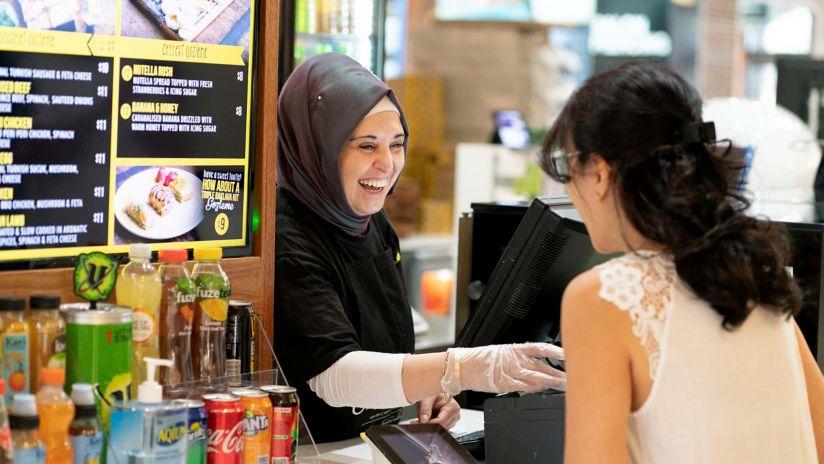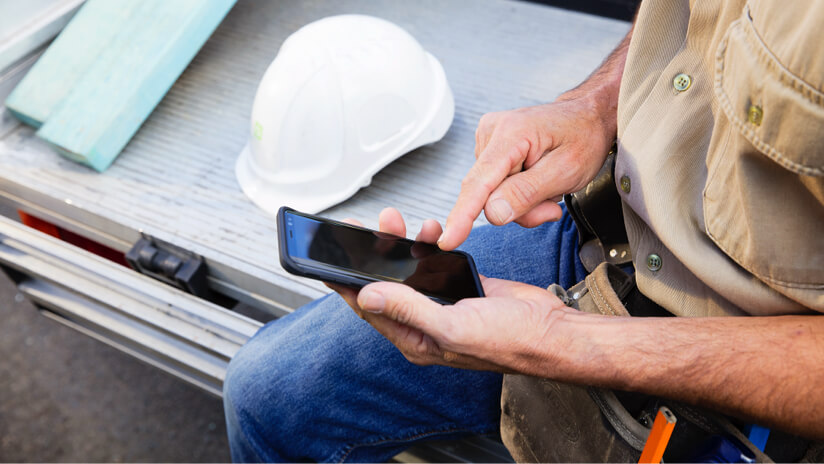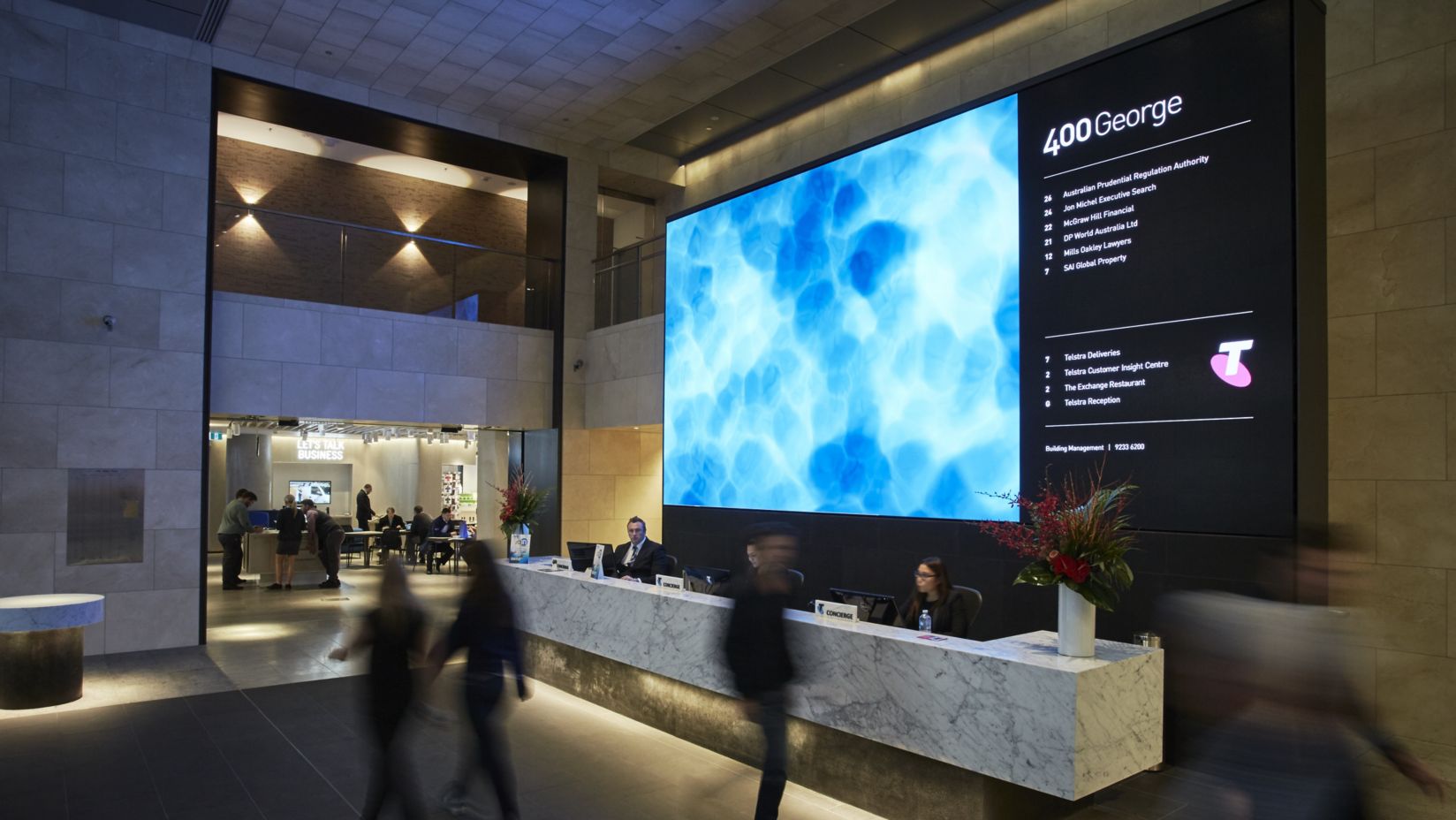What is a POS system?
Learn about POS systems, their benefits and how they can help improve your business operations.

What does POS mean?
POS is short for point of sale. A POS system generally refers to the platform or place where a customer pays for goods or services.
A POS system may look different in different businesses. For example in a supermarket each item has a barcode. When customers check out, the cashier physically scans items. The POS system tallies the total cost, processes the payment and prints a receipt.
With ecommerce businesses, the POS isn't something you can physically touch. It's software embedded into the retailer's website. The digital POS takes customer payments, processes the transaction and sends an electronic receipt once the purchase is complete.
Many of today’s POS systems can go beyond taking payments. Some enable you to gain insights about your business. For example, the data from an electronic POS can help you generate more predictable profits. There are also POS systems that can integrate with stock management tools and provide a real-time view on transactions.
How does a POS system work?
Modern POS systems have two main elements: hardware and software. If you only have an online store, you'll only need the software part.
Common POS hardware
POS system hardware can range from more traditional to cutting-edge technology.
Below is a list of some of the commonly used hardware. You may find that you need a combination of components to fit your business requirements.
Card readers
These facilitate different forms of card payments, from magnetic stripe cards to chip and PIN cards and contactless payments.
Cash registers
Cash registers allow for cash payments and help provide secure storage for cash and coins.
Barcode scanners
Barcode scanners are a great option for retailers that sell a wide range of products at brick-and-mortar premises. They can speed up checkout times and improve customer experiences.
Receipt printers
Receipt printers produce physical receipts for customers buying in-store. Some POS systems will also enable you to send digital receipts via text message or email.
EFTPOS terminal
EFTPOS stands for Electronic Funds Transfer at Point of Sale. EFTPOS can be important for meeting your customer payment preferences.
Learn more about EFTPOS for business.
Integrated POS scale
Scales that integrate into the POS are ideal for grocery stores or any business that sells products by weight. The scale calculates the cost based on weight and communicates with the POS for accurate billing.
Mobile POS
These systems leverage portable devices, tablets or smartphones to help you manage transactions on the go. Even brick-and-mortar stores or venues can benefit as portable POS systems can also help shorten lines, bust queues and maintain sales momentum during busy periods.
Common POS software features
POS software can include features to help you handle tasks like inventory management, sales reporting and customer relationship management. Let’s explore this in more detail below.
Inventory management
Certain POS software can help you keep track of stock as your products get sold or restocked. For instance, if you sell stationery, the software records when someone purchases a pack of pens. The system can then automatically adjust the inventory level. This helps you keep on top of what's in stock and what might need reordering.
Sales reporting
Many POS solutions can help you gather sales data. Let’s say you run a coffee shop. Your software might reveal that lattes are your top-selling item every morning. This helps highlight sales opportunities, such as introducing a new signature latte.
Customer relationship management (CRM)
Ever wondered how businesses remember your favourite order or send personalised deals? It could be their POS software doing the magic for them.
If you own a boutique, the right POS software could help you understand your customer's buying habits. This data can then be used to send tailored suggestions and promotions. This can help enable a more personalised experience, which in turn, can help improve customer loyalty and retention.
Learn how to improve customer experience and boost customer loyalty
Explore ways customer retention benefits your business
Benefits of implementing an efficient POS system
Implementing a POS system can help increase efficiency and improve customer satisfaction. We unpack some examples below.
Enhance customer experience
POS systems can help transform a customer's experience from being satisfactory to delightful. They can help speed up the payment process and avoid customers waiting around. For example, a restaurant with a mobile POS solution could offer customers the opportunity to pay for their meal at their table instead of cueing at the register.
Many POS systems also integrate with multiple payment types to help cater to a wider audience. This can help you meet customer needs and preferences. By finding out the payment methods your customers want, you can customise your system to fit.
Accurate, real-time inventory management
Certain POS systems can integrate with your stock level tracking and assist with inventory management. Picture a bookstore. When a sale is made, the POS system sends that data to the inventory management software. This automatically updates the record of stock levels. This type of inventory integration helps the bookseller understand in real time when to restock the latest bestsellers.
Reduce human error
Mistakes are part of being human, but they don't have to be a part of inventory and billing.
Physical POS systems with barcode scanners help ensure the customer pays the right price. This helps reduce the likelihood of over or undercharging.
This level of precision extends beyond the checkout counter. You may notice an improvement in how quickly and confidently you can balance your books at the end of the day. Accurate daily reconciliations can save you time and contribute to a well-maintained financial health.
Gain insights to drive sales
Sales data can help tell stories that inform business decisions. Consider a sports equipment store. It can use sales data to understand the seasonal demand for cricket gear. It can then target promotions and special offers in the lead up to these peak sales periods.
How to choose the right POS
There are a number of factors to consider when deciding on a POS system. We explore some of these in more detail below.
Scalability and adaptability
The ideal POS system can meet present needs but also adapt to your future ones. Try thinking ahead. What does the growth trajectory of your business look like? Are you planning to expand to multiple locations, delve into the bustling eCommerce landscape or experiment with pop-up stalls?
Each move has unique operational demands. For instance, managing multiple locations may require a system that can sync real-time stock levels across all locations. Breaking into eCommerce may call for a POS that can integrate seamlessly with online platforms. You may also benefit from a lightweight, mobile-friendly POS if you plan to take payments from different locations.
Compatibility
POS systems that integrate with your current systems can help create a smoother workflow. Let's say your business uses a cloud-based accounting solution. A POS that automatically tracks sales could result in spending less time on data entry and more time on analysis.
Ease of use
Many modern POS systems have intuitive interfaces that help reduce the learning curve and likelihood of errors. Such a system could help save training time and bring better experiences to customers.
Cost-effectiveness
Different POS systems will have different cost structures. Consider both initial setup costs and ongoing costs such as updates or merchant fees, when considering which POS solution is right for you. Try exploring options that align with your budget and operational needs.
A POS can be one of your core business foundations
Selecting the appropriate POS system can be a strategic move. They can help you simplify transactions, sharpen inventory management, uncover sales insights and customise customer interactions.
By integrating a POS system that meets your specific needs, you could help improve your business operations and deliver delightful customer experiences.
Want a convenient and portable payment solution for your business?
Make sales from the palm of your hand with pocket-sized, portable EFTPOS. Connected via Bluetooth to your smart device, Tyro Go gives you freedom to take payments on the go.
For eligible business customers new to Tyro, referred by Telstra. Some payment types and transactions excluded. Tyro Go requires a Bluetooth-enabled mobile device or tablet, Tyro App to be installed and mobile network coverage. Details, Terms and Conditions: Telstra.com.au/tyro
Explore more on this topic
Want fast, simple, and innovative EFTPOS for your business?
Make your first $15K of sales fee-free, plus access flat-rate payments with no lock-in contract, when you take up Tyro with Telstra.
For small business customers new to Tyro, referred by Telstra. Some payment types and transactions excluded. Offer subject to contract and change. Details, T&Cs: Telstra.com.au/tyro





